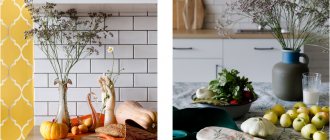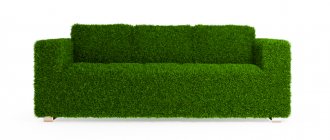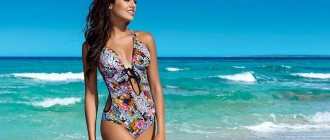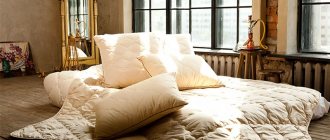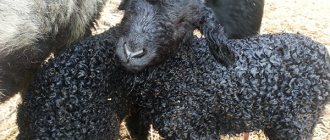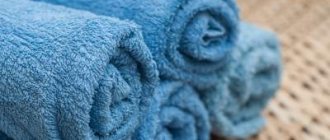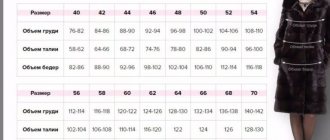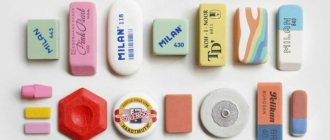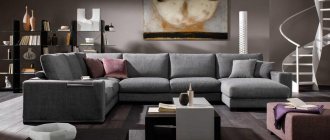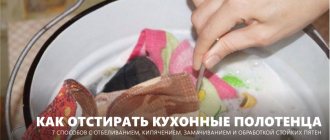Our quality of life standards are becoming higher. We try to surround ourselves with good-quality, beautiful, safe things and objects, and we take a balanced approach to the purchases we make. We select products carefully, excluding spontaneity of purchase. And this applies not only to furniture, household appliances, and electronics. Even buying a new beautiful towel if you choose illiterately can turn into an annoying disappointment and a waste of money. Let's try to summarize everything you need to remember and consider when choosing towels.
Types of towels by purpose
When we go to the store to buy towels or order them online, we know exactly how we will use them, so we choose products of the appropriate type. According to their purpose, all towels are divided into:
- Bath products, which should be gentle, soft and maximally hygroscopic, capable of instantly absorbing moisture remaining on the skin after washing. Towels of this type are usually large in size and have a pile structure.
- Kitchen - we are used to wiping our hands, wiping dishes, work surfaces during and after cooking. Due to their specific use (frequent contamination with fats, juice of fruits and berries, etc.), such towels are subject to aggressive types of washing, as well as ironing, so durable fabrics are chosen for them, mainly lint-free, linen or cotton waffle.
- For the face - after washing, wipe it with a soft towel that will not leave micro-scratches on the skin, for example, bamboo, which also has a bactericidal effect.
- For arms and legs - for these small towels, the main selection criterion is excellent hygroscopicity.
- Children's - a special category intended for babies and older children; children's towels should be the softest. Usually these are double-sided colorful terry products. The bath option often has a hood.
- Beach ones, which, in addition to their intended purpose, are also used as a sunbathing mat. They should be large in size, have increased resistance to abrasion, absorb water well, and provide a pleasant tactile sensation.
- Massage - with a more rigid structure, regulated by the composition and type of fiber torsion.
- Ritual - wedding, baptism, Easter, and also used at funerals. As a rule, they are sewn from linen, decorated with themed embroidery or printing.
Terry towel CLEANELLY Anello 70x140cm white, art.PTO-703-585
Tips for choosing
Personal use involves a set of towels for each family member: bath towels for showering, facial, for feet and hands, kitchen, beach. When choosing products you need to consider the following tips:
- Children's towels are made from double-sided terry cloth. The surface instantly absorbs liquid, and the fiber allows you to paint it in any shade, which makes kids happy.
- Kitchen accessories must be made of natural fabrics, otherwise the accessory will not withstand frequent washing and will not provide absorption.
- The bathroom requires bath products made from cotton or bamboo. It should absorb water.
- Beachwear should have a bright design and remain light.
- Facial can be soft and hypoallergenic.
Hotel service involves the provision of: toilets, small baths - for hands, feet, body. The advantage remains with cotton, since the material does not require care.
Typical sizes
The parameters of a towel are determined by its type. The most common length and width standards are:
- 30x30 or 30x50 - this size is suitable for hand and kitchen towels;
- 50x70 – optimal kitchen standard;
- 50x85 and 50x90 are frequently used face towel parameters;
- 50x100 is suitable for washing and as a small shower towel;v
- 70x150 - average bath and shower size;
- 80x160 - bath classic;
- 90x160, 100x150 or 80x200 - these bath towels are closer to a sheet, which you can not only wrap yourself in after a bath or sauna, but also use on the beach, in a massage room, etc.
Terry towel 50x90cm peach
Composition of fabrics for the production of towels
Traditionally, cotton is considered the best raw material for the production of towels. It is soft, hygroscopic, absolutely environmentally friendly, products made from it are durable, and do not cause allergies even in people with super sensitive skin. Natural cotton towels, which do not contain even a small percentage of synthetic fibers in their composition, are an order of magnitude higher than the artificial or semi-synthetic alternative, but this is not the case on which you should save.
The markings on the label will tell you about the composition of the fabric of the towel when choosing, so you need to study it carefully before purchasing. At the same time, keep in mind that manufacturers often, in an effort to hide from you reliable information about the composition of the towel fabric, resort to various tricks and tricks. For example, to the usual inscription “100% cotton” additional letters are added in brackets: M, PC, etc. This means that the fabric still contains artificial fibers: modal, polyester-cotton or other synthetics. It is also important whose cotton was used to make the towel fabric. Even if the towel is made in Russia, the cotton is supplied to us from different countries. The best quality cotton comes from Pakistan and Egypt.
Manufacturers add other types of fibers to cotton in order to reduce the cost of the product. The easiest way is to add synthetics, such as modal viscose fiber. It gives the towel volume, improves its presentation, adds softness and resistance to wear. But if viscose is a completely acceptable option, even improving certain performance properties, then the addition of other types of synthetic fiber to cotton has an extremely negative effect on the hygroscopicity of the towel, and the tactile sensations when using it also worsen.
Natural additives, on the contrary, improve the properties and appearance of the towel. For example, if you add eucalyptus fibers—lyocell—to cotton, a towel made from such fabric will be especially soft, with a smooth, silky surface. The hygroscopicity of the fabric will improve, since lyocell absorbs moisture and dries 1.5 times faster. In addition, it does not attract dust, does not provoke allergic reactions, and does not accumulate odors. A towel with lyocell can be machine washed, but the wear resistance of such products is lower than that of pure cotton.
Linen or silk are often added to the composition of cotton towels. The first increases the service life of the product without compromising hygroscopicity. In addition, the presence of flax fibers in the towel provides those who use it with a light massage effect. The addition of silk threads provides the towel fabric with smoothness and shine.
Not so long ago, bamboo towels appeared on the Russian market, but their popularity is already high. More and more buyers are giving preference to this particular type of towel, because fabric made from bamboo fibers absorbs moisture better than cotton, gives a very pleasant tactile sensation, and has a beautiful shine. It also has a bactericidal effect, destroying up to 70% of bacteria that fall on the surface of the product, and differs from cotton in its higher strength and durability.
Fiber weave type
Not only the composition of the threads determines the properties, characteristics and appearance of the fabric, but also the method of weaving them. Terry fabric is woven from four threads, leaving elongated loops on one or both sides of the fabric, forming a characteristic pile that gives the towel softness and volume. Terry towels have gained popularity among different categories of buyers due to a combination of such qualities as pleasant and comfortable use, aesthetic appearance, hygroscopicity, and resistance to washing.
Velor towels are woven in a similar way, with four threads, but the remaining loops are cut low, creating a beautiful velvety surface. This weaving reduces the rate of moisture absorption compared to terry products.
The structure of waffle fabric gets its name due to the fact that its weaving forms a checkered pattern similar to a waffle, which gives the fabric volume and increases the speed of moisture absorption from hands, dishes, window glass, etc.
The production of jacquard towels requires more complex equipment to weave many threads into dense, reversible patterns, smooth or terry.
A few words about aesthetics
Buying a good and high-quality towel has not been a problem for a long time. But choosing a product that will last for many years, delighting with excellent performance characteristics, can still be difficult. The choice of this timeless bath accessory today is primarily related to appearance and its aesthetics. As a true connoisseur of beauty and sophistication, the Westwing shopping club recommends choosing not only small details and decor in unison with the style and design of the bathroom, but also towels, which can be decorated with patterns of different types.
- A printed product is a product whose edge is decorated with elegant embroidery or a graceful design.
- A plainly colored towel attracts attention not with its original decorations, but with the rich shades of a rich color palette.
- Jacquard patterns have a stunning look. However, the complexity of their production affects the price of the finished product.
- Printed patterns can decorate an elegant jacquard design, drawing attention to the unique weave of threads.
A fluffy, incredibly soft and attractive towel will certainly give you unforgettable emotions after a relaxing bath or invigorating shower. You can choose the perfect product for you from the fabulous and truly royal range of textile decoration for your home at the Westwing shopping club. The joy of purchasing will only be enhanced by the pleasant price of products of the highest quality made from natural materials. Stay tuned for regular updates, seasonal discounts and hot sales available to Westwing subscribers. Find inspiration with us!
Buying a quality towel: nuances of choice
So, you know exactly the type and size of towel you need and your own preferences for fabric composition. All that remains is to find a suitable product from the abundance of home textiles on offer. It’s easy to choose the color and size you need. But after this, the selected product should be checked for the quality and color fastness of the threads. Unfold the towel and carefully inspect the surface, checking the uniformity of coloring and finishing of the edges. The quality of the paint or its application technology can be assessed right in the store. To do this, you need to run a piece of white cloth soaked in water over the surface of the towel. If traces of paint remain on the fabric, this means that the towel will quickly lose its presentable appearance or even become unusable after ten washes.
It is also important to pay close attention to the processing of the edges of the towel. They must be very neat, all threads are the same length, cut evenly, elongation is unacceptable. Often the edges of towels are simply overlocked, but this processing method is far from the optimal solution, since after a short time the edges will probably fray. It is better to go over them with a frequent seam (2.5 stitches for every centimeter).
Household towels
They are distinguished by lower density, greater brightness, and the presence of variegated patterns and patterns along the border. Typically, these towels have a single thread loop.
Borders are made in several types: plain-dyed, patterned, multi-colored, with a Greek border or logo. Their width can vary and comes in several sizes - up to a maximum of 8-9 cm.
Smooth towels (or plain towels, as they are also called) are intended for use in beauty salons, sports clubs, beauty salons, fitness clubs, etc.
Black terry towels are especially popular. They are used in beauty salons and cosmetic centers because they are not prone to contamination and traces of paint are not visible on them.
What to consider when buying a terry towel
When choosing a terry towel, you should objectively evaluate the weave density of the fabric, as well as the length of the pile. Density is measured in grams per square meter. If for kitchen and waffle towels a density of 150-250 g/m2 is sufficient, then for bath towels or those used for washing, this figure should be much higher. Their density varies in the range of 300–800 g/m2. The higher this indicator, the more elastic the product and the longer it lasts. The best density value for a bath towel is 400-600 g/m2. Terry towels with this density absorb water well, dry quickly, and last for many years. Towels with a weight less than 350 g/m2 are subject to rapid wear.
The length of the pile affects such properties of the towel as service life, ability to absorb moisture, and aesthetics. The optimal pile length is 5 mm. Of course, when purchasing, you can easily be tempted by towels whose pile exceeds 8 mm, they are so voluminous and soft. But immediately after the first wash, the external attractiveness will be lost, and the pile that rolls off with each wash will turn the fabric into a hard, tactilely unpleasant fabric. If the pile is shorter than 5 mm, then the towel lasts a long time and looks good, but becomes less hygroscopic and rough.
It’s good if, when buying towels, you see them with your own eyes and touch them with your hands, take into account the selection criteria listed above. But for many, due to high employment and the intense pace of life, there is simply not enough time to go to a regular retail store, and we often order clothes and household goods via the Internet. What can you do to make online shopping a joy? Of course, the most important thing is to choose the right seller. If this is “Maxid”, everything will go well! For many years, it has been selling a wide range of high-quality and useful household goods through a network of retail stores covering a large number of Russian cities. For those who do not have time for classic shopping, we provide the opportunity to order towels in the online store.
Caring for terry fabrics
Terry towels can be washed either by hand or in a machine.
Any terry towel, regardless of its purpose, will remain soft and pleasant to the touch for a long time if you follow simple care rules.
- Terry towels can be washed in a machine or by hand at temperatures from 30°C to 60°C using regular detergents.
- You should not use conditioner when washing, since the silicone film formed on the surface of the material reduces its hygroscopicity.
- Terry products do not need to be ironed; just smooth out the folds on a damp cloth with your hand.
- If elongated loops appear on the surface of the towel, they can be cut off with scissors.
The correct choice of towel in size, density and composition will ensure long-term and pleasant use of the terry product.
